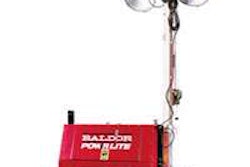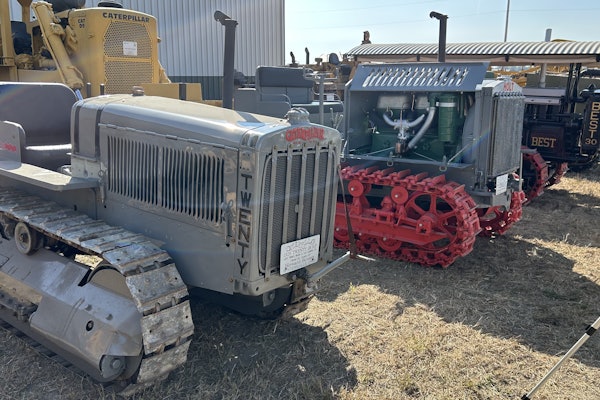Nearly one quarter of Wyoming’s major roads are in poor condition, with pavement deterioration projected to worsen significantly in the coming years under current funding levels, according to a new report released today by TRIP, a Washington, D.C.-based national transportation organization.
In addition to substandard road conditions, 22 percent of the state’s bridges are deficient or obsolete and Wyoming’s traffic fatality rate is among the highest in the nation, the TRIP report reveals. (For more information on the condition of our nation’s bridges, including a state-by-state breakdown by percent of those that are functionally obsolete and structurally deficient, see Better Roads’ “2009 Bridge Inventory.”)
TRIP’s report, “Future Mobility in Wyoming: Meeting the State’s Need for Safe and Efficient Mobility,” finds that increased investment in transportation improvements in Wyoming could improve road and bridge conditions and safety, and widen key roadways to support long-term economic growth in the state.
During the past decade, Wyoming has used a combination of federal and state funding to improve its surface transportation network, but many sorely needed transportation projects still remain unfunded.
TRIP’s report contains lists of needed transportation projects that currently lack adequate funding to proceed.
The report finds that 24 percent of state-maintained roadways are currently in poor condition. The percentage of roads in poor condition has risen steadily since 2000, when 15 percent were in poor condition, and is expected to continue to climb in the coming years.
Under current funding levels, the Wyoming Department of Transportation projects that 42 percent of state-maintained roads will be in poor condition by 2015. Roads in need of repair cost each Wyoming motorist an average of $230 annually in extra vehicle operating costs – $88 million statewide – including accelerated vehicle depreciation, additional repair costs and increased fuel consumption and tire wear.
The TRIP report also finds that 13 percent of Wyoming’s bridges are structurally deficient and an additional nine percent are functionally obsolete. In addition to deteriorated road and bridge conditions, the state’s traffic fatality rate is the eighth highest in the nation.
According to the report, without a significant boost in funding, numerous needed transportation projects will not proceed, including a new bridge on the West Belt Loop over the North Platte River in Casper; replacing three bridges on US 26 and US 89 over the Snake River in Teton County; 12 miles of pavement preservation work on I-80 in Sweetwater county; reconstruction of the I-90 interchange in Sheridan; reconstruction and adding lanes to US 287 in Laramie; and the construction of bus garages and transit facilities in Jackson, Rock Springs and Laramie.
A full list of needed projects that would require a significant boost in federal and state funding to proceed is included in the report.
Despite the current economic slump, Wyoming continues to experience growth of population, vehicle travel and economic output.
Since 1990, the state’s population has increased by 17 percent, vehicle travel has increased by 56 percent and gross domestic product, when adjusted for inflation, has increased by 63 percent, resulting in increased demands on Wyoming’s major roads and highways.
The federal surface transportation program, which expires on December 18, 2009, remains a critical source of funding for road and bridge repairs and transit improvements in Wyoming.
According to the report, from 1998 to 2008, Wyoming received $2.56 billion in federal funding for road, highway and bridge improvements, and $58 million for public transit, a total of $2.62 billion.
“While the state has put a combination of federal and state funds to good use in the past, in the coming years, many additional needed projects will remain stranded on the drawing board because of insufficient funding,” said Will Wilkins, executive director of TRIP, in a written statement.
“It is critical that the state adequately fund its transportation system and that Congress produces a timely and adequately funded federal surface transportation program,” Wilkins continued. “Thousands of jobs and the state’s economy are riding on it.”
This year’s federal American Recovery and Reinvestment Act provides approximately $158 million in stimulus funding for highway and bridge improvements and $9 million for public transit improvements in Wyoming.
This funding has served as an important down payment on needed road, highway, bridge and transit improvements but is not sufficient to allow the state to proceed with numerous projects needed to modernize its surface transportation system.
With the current federal transportation program set to expire this month, Congress has an opportunity to approve a new federal surface transportation program that could include a significant boost in funding for highway and transit improvements in Wyoming.
“This report demonstrates that the critical needs for a safe and efficient transportation system are still ongoing and not going away regardless of the tight economic times in which we find ourselves,” said Jonathan Downing, Wyoming Contractors Association Executive Vice President, also in a written statement.
The full TRIP report is available on the organization’s Website at www.tripnet.org.











